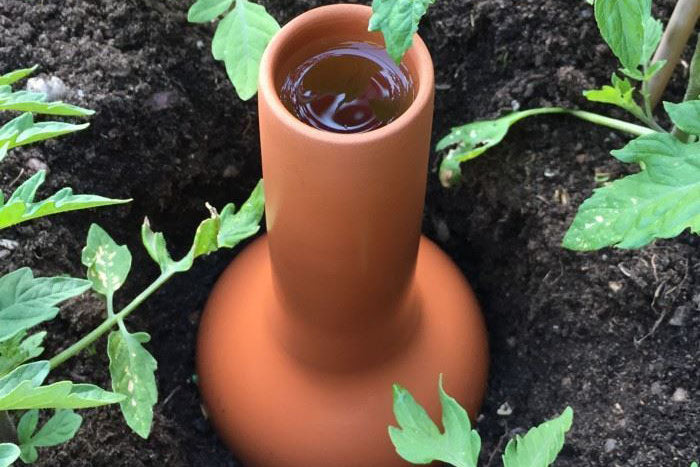Technology in the garden - the olla

The use of ollas - unglazed porous clay vessels - is an ancient technique for irrigation, saving time energy and water. It’s a simple idea: the clay pot is buried under the soil with only the opening visible and slightly protruding above the surface. It is then filled with water and the porous walls of these terracotta pots slowly release water directly to plant roots under the ground. If the soil is dry, the water inside the olla is released faster, so less water is lost to evaporation and run off. Using ollas also means roots don’t go through extremes of dry or wet below the soil, while the surface remains dry which discourages weeds and slugs. Plants irrigated by ollas also develop a denser root system.
Olla irrigation is most efficient for crops with fibrous root systems like squash, tomatoes and chillies. They’re also useful for watering young trees and shrubs. To use them, the ollas are buried in the soil, which is also packed around the olla. Fill the vessel with water and top up every week or as frequently as needed. Using a cover will prevent evaporation.
You can make your own ollas from porous clay pots (Tanya from lovelygreens.com, whom we featured a few months ago, has a YouTube video on this) or buy ready-made ollas, some of which are designed specifically for containers – ideal if you’re going on holiday for a week.







